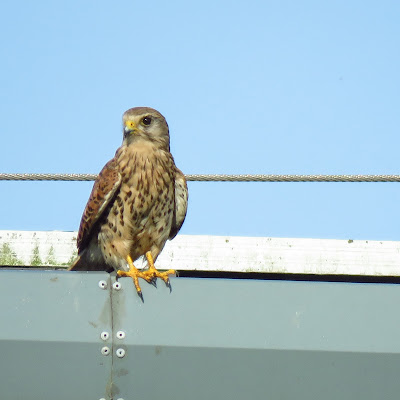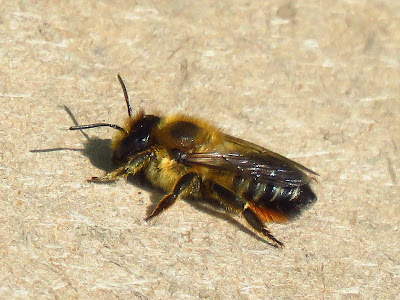
Wilmington Bridge, low tide.
After a short while, I get to the steps that provide access to the river bank, from where I take the top shot. In this section, the river crosses an industrial area. There are steps to get to the river bank and steep slopes, so it is not widely accessible, despite being part of the Wilberforce Way. The first half is on tarmac or cement, the second on mowed grassy banks. The river meanders are flanked by soft banks in the inside of bends, with natural vegetation growing. On the outside bends defences are hard, made of steel piles and concrete.
A flock of Black-headed Gulls flies past, while a group sat on the flat roof of an industrial building, and yet others feed on the river bed.
As I cross the Stoneferry Bridges I spot a gull chick on the roof of B&Q, and almost on cue, its parents start circling over me calling their alarm calls, 'ga-ga-ga!' and 'pyou!'. Their loud cries accompany me for a while and it is a relief when they finally leave. North of the Stoneferry bridges, there are a couple of empty plots with grassland, more trees and hedges and patches of reed beds on both sides.
Lesser black-backed gull chick on roof.
The view from Stoneferry north bridge.
Black-headed Gull.
I hear the call of a Grey Wagtail. There is a pair and they are alarm calling. They are probably nesting nearby, possibly with a second brood. To confuse matters there is a Pied Wagtail juvenile in the same area.
Singing Reed Bunting.
As I start my way back, I see a fox staring at me from the river bank. It quickly disappears under the fence. To compensate, a bit further ahead on the way back, on a playing field that hasn't been mowed in a while, another fox is scratching its ear.
Fox having a good scratch.


























No comments:
Post a Comment